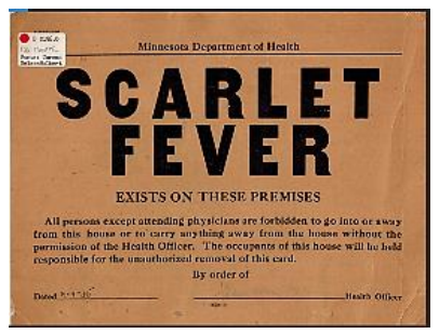This history lesson comes from one of our newsletters. Newsletters are a benefit of membership with the Hopkins Historical Society. Learn more here: |
How a Hopkins Doctor Battled
the Scarlet Fever Epidemic of 1902
by Mary Raabe
first published in 2018
Burnes Family History Acknowledgements
Hennepin County Review
Minneapolis Tribune
Minneapolis Journal
Minneapolis StarPioneer
Physicians in Hopkins, a memoir by Jeanette Blake
Burnes Family Reunion, by Bruce Burnes Remembering, A book about the Burnes family by Clint and Dot Burnes
Hennepin County Review
Minneapolis Tribune
Minneapolis Journal
Minneapolis StarPioneer
Physicians in Hopkins, a memoir by Jeanette Blake
Burnes Family Reunion, by Bruce Burnes Remembering, A book about the Burnes family by Clint and Dot Burnes

